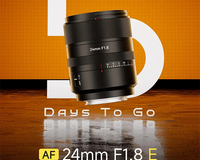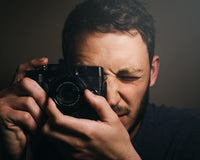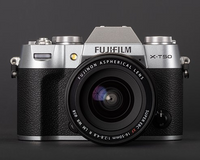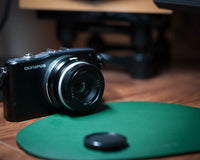The introduction of the camera and camera lens has changed our life radically and we can use it to capture some beautiful moments in our life. This post will give you some great photography tips and make you take awesome pictures even if you are a beginner photographer.
How can I learn photography techniques? What are the tips of photography?
Now I decided to collect 15 professional photographers and ask them one question:
What are 60 photography tips a beginner photographer needs to master?
These 60 photography basics for entry-level photographers I got from these 15 photographers will helpful for you. I’ve listed all answers below:
Photographers:
1. Wes Perry;
2. Jimmy Cheng;
3. Kyle Taggart;
4. Nigel Crowley;
5. Richard Wong;
6. Dustin Abbott;
7. Andrea Carretta;
8. Tea;
9. Hiron;
10. Davide Losapio;
11. Adrian Alford;
12. Take Kayo
“Familiarity with your gear”
Wes Perry,Photographer and Owner of YouTube Channel-Wes Perry
1.) Familiarity with your gear: Although having good gear can help, becoming familiar with your gear is even more important. Having a fast lens or powerful camera won't get you anywhere if you don't know how to use it. And it goes beyond just knowing how to use it:
you need to have muscle memory and reflex for how your equipment works. Because of this, constantly changing between lenses and camera bodies can be a detriment to your work.
Once you're Really familiar with things, have everything set up to your liking and convenience, then it's much easier to focus on getting the right shot and finding the right moments.
2.) Seeing light: The battle rages on between natural light and artificial or flash photography, but neither of them can be done well if you don't learn to see light. It sounds like such a simple thing, but it's not.
This comes naturally to very few people, and often takes years of practice and observation to become intuitive and always present in your mind. And it's not just a sudden revelation (although at times it can feel that way), but a progression throughout your life to constantly grow in this awareness.
But be warned: once you start to see it, it's hard to unsee it. Suddenly you'll want to stop and investigate the strangest of things, just because of the way that light is falling on them. From buildings to faces to small objects, the right light can make anything beautiful.
3.) Digital redundancy: Yep, we're taking a huge shift here. There are way too many photographers that ride a knife's edge with their client's work, never having more than one copy of their files, and this is terrifying! But many simply say "It's never happened to me!" so they don't worry about it.
But statistically speaking, it will happen to anyone who's taken enough photos. I've taken a Lot of photos now, and have had memory cards fail, hard drives fail, lightning strike during a backup process. ANYTHING can happen.
There is too much to go over here, but Please learn about file backups and redundancy to keep your work, your memories, and your clients' work safe!
4.) It's about connection: this one might sound a bit cliche, but taking a good photo isn't just about getting the light and camera settings right. Especially if you're working with just everyday people, like clients, in nearly every form of photography it's important to have a rapport with them before being able to take a good photo.
Sometimes you have very little time to do so, but in what little time you have, it's important to make a good impression, and to make sure they're comfortable with you.
This goes with everything from taking headshots (they need to feel at ease to get Real smiles and expressions!) to wedding photos (they have to know that you've got their back and will get the best results no matter what!), and even candid photography (people need to be able to be comfortable in their surroundings to truly be themselves).
If you're working with a good model, this is still helpful, but less important, as appearing naturally comfortable in any photo or circumstance is one of the most difficult things for a model to learn.
5.) Carrying on from 4: A good model can be more important than the photographer sometimes: You heard me right! Modelling takes a long time to master, and photographers often belittle this, and unnecessarily raise themselves up on a pedestal to get all the credit, but hear me out.
A mediocre photographer can take some pretty great photos if they're working with an experienced and skilled model. Some great models even know all about point #2, seeing light, whether consciously or unconsciously, and will orient themselves in the most flattering or interesting ways without even being asked.
They can put on natural and comfortable expressions at a moment's notice, and angle themselves in the best ways, cycling through poses to make sure you get some good shots. If you're an inexperienced photographer, you can often learn a lot from a good model, as long as you're willing to act with a bit of humility!
Learn more about Wes Perry or follow Wes Perry on Instagram
"Be Patience"
Jimmy Cheng, Photographer and Owner of YouTube Channel-Red35 Photography
1.) Decide what you want and like to shoot. This is the base for photography. Photography is often refer to as a way of expressing your vision. So it will show if you are interested in what you shoot. You need to understand your subjects and the type of area you want to be focused on. It’s always better to be ‘GREAT’ at something than doing just ‘OK’ for many things.
2.) Learn to see the light and when to use it to shape your subject and create visual interest in your photograph.
3.) Choose the right lens for your visualisation. Yes you can use anything to photograph. But each lens and focal length can dramatically change how the photograph is presented.
4.) Be Patient. Take a great photograph needs time. As much as we say capturing the moment. It’s often a lot happened before that the shutter was pressed. The study of the location, the anticipation of that moment, that could be a few minutes to may be a few days. This is particularly evident in wildlife photography when a photographer waited days to capture one perfect shot. Great photograph isn’t just ’taken’, it is made.
5.) Practice. It seems obvious but many photographers thought reading a few blogs and watching a few videos would make them experts. But without practice, knowing your area and equipment, you would never be able to take great photographs. An old saying is always true. “Practice Makes Perfect”.
Learn more about Jimmy Cheng or follow Jimmy Cheng on Instagram
"Practice"
Kyle Taggart, Photographer and Owner of YouTube Channel- hikyletaggart
I could go over things like leading lines, the rule of thirds, ect, but I'm going to give a very practical tip to master.
That's understanding natural light and how it affects your photos. You should work to understand how your settings should change per situation, but if you're still shooting in auto modes, a great tip is to understand good light and what time of day is a good time to shoot.
It's easy to take bad photos when the sun is shining at its brightest and you're on a beach with no shade at all and everything is washed out. Just simply understanding that it's better to take photos at different times, is a key to getting better photos even in auto modes.
If I were on the beach taking photos, no shade in sight, I'd wait until after the sun isn't at its highest point to take some photos. You can take this a step further and even look into different mobile apps that show the trajectory of the sun and moon. That would enable you to then plan when and where you'll have great natural light for your photo sessions!
Learn more about Kyle Taggart or follow Kyle Taggart on Instagram
"be bold, experiment and take risks!"
Nigel Crowley, Photographer and Owner of YouTube Channel- Zenography
- ) Learn to shoot in manual. It'll help you to understand light, and to control your image. I wouldn't advise always shooting in manual - auto is much easier and it produces some great results, but a good photographer knows why the camera is doing what it's doing! Control the camera, and don't let the camera control you!
- ) Shoot some film. You don't need a fancy camera for this, pretty much any film camera will do, but it will give you limits that you need to work within which, if mastered, will grow your confidence, skills and understanding.
- ) Learn to see like a camera. Human vision is subjective and selective - when we turn our attention on something it feels like that's all that we can see, and we ignore everything else. A camera isn't selective, so you need to develop the skill of selecting for it. There are many ways to shoot an interesting subject, some will work and some won't, but once you know how a certain shot is likely to look to the camera, you're more than half way towards creating great images!
- ) Practise composition. Fill the frame with your subject as far as you can, and don't clutter your shot. Once you start to see lines, angles, and forms in a subject, and to put them together in an image, they will do much of the work of creating great images for you!
- ) Although there are general rules that help, there's no right or wrong way to do photography. So, be bold, experiment and take risks! You'll shoot an awful lot of rubbish, but you'll shoot one or two gems too! Giving yourself artistic freedom is important.
Learn more about Nigel Crowley or follow Nigel Crowley on Facebook
"Less is More"
Richard Wong, Photographer and Owner of YouTube Channel-Richard Wong
When you go out and planning to take photos, you may be tempted to bring a large camera bag and all your lenses and camera gear so you won't be limited by the gear you got.
But quite often, bringing too many gears would actually give you adverse effects.
When i shooting weddings or even just go out for a fun trip with friends or family, I used to bring a lot of gears. A few cameras, many lenses, and many accessories. So, I was always thinking about what camera and lens should I use to capture the next photo.
My mind was really focused on the gear rather than photography. I spent a lot of time changing camera and lenses but always felt I chose the wrong camera and lens. I then experimented with bringing less camera gear to see how it would affect me.
For example, my last holiday trip to Japan, it was a 2 weeks trip and I only bought my Leica Q which has a fixed 28mm lens and I left all my other camera and lenses at home.
Yes, it means I could only shoot at one focal length. No telephoto, no fisheye, no ultra-wide angle, no portrait lens.
But I was able to focus on how to get the best photo with my only camera/lens. That allows me to enjoy photography and the trip a lot more. And I found the photos I got from that trip are not that bad at all.
So next time when you travel or going out for a photo walk, limit the amount of gear you bring with you. Try bring only two lenses at most and I think you will love it."
Learn more about Richard Wong or follow Richard Wong on Instagram
“Participate in a photo sharing group”
Dustin Abbott, Photographer and Owner of YouTube Channel- Dustin Abbott
"1.) Look at a lot of photos on photo sharing sites from photographers whose work you admire. You need to learn what does and doesn’t work in a photograph. Often you subconsciously learn to be a better photographer by looking at quality work.
2.) Spend time with a manual focus lens. It teaches you a lot about using creative focus, aperture, and depth of field.
3.) Shoot with just one focal length for a while. Learn how to use that one focal length creatively. Too often amateur photographers just use the extremes of their zoom range without learning that sometimes the in between focal lengths make for better photos.
4.) Participate in a photo sharing group where you invite criticism of your photos. It can be painful, but you often learn to be better through that criticism.
5.) Think about what is in the background. You can save yourself a lot of editing work if you really consider what’s in the frame while composing. Often a slight change in composition or angle makes for a much better photo.
Learn more about Dustin Abbott or follow Dustin Abbott on Instagram
“Practice, Practice, Practice”
Andrea Carretta, Photographer and Owner of YouTube Channel- Andrea Carretta
1.) Light. Quite possibly the most important thing to understand when you first begin your photography journey is light (and you thought it was going to be learning that fancy camera, didn’t you?!).
Light is everything when it comes to creating a good image. Even if you know your camera inside and out, you know all of the right settings and every trick in the book, if you don’t have an understanding and awareness of light and how it impacts your photographs, you will not be able to capture great images.
Light can literally make or break your photos. You will want to look for nice even lighting that is flattering to your subject and doesn’t cause distractions. This isn’t to say that you can’t take good photos in less than ideal lighting situations.
In fact, knowing how to use and work with all kinds of light will enable you to take great photos no matter what. Consider the example below. These are both quick snapshots, taken during midday with harsh sunlight.
In the first image, you can see the child squinting in the sun and the harsh light across his face. A simple change of angle to the sun changes the image entirely. With the sun to his back, the photo is much more flattering. Being aware of the lighting around your subject will go far in helping you to create great images!
2.) Exposure Triangle. The first thing to begin familiarizing yourself with is what is called “the exposure triangle.” This is just a fancy way of talking about the three basic ways your camera’s sensor receives light.
Aperture: Aperture is a term used to describe how open or closed the opening in your lens is. The more open the aperture, the more light is let in. The more closed it is, the less light. You aperture also determines how much of your image is in focus, known as the focal plane in your image. Read more on aperture right here!
ISO: ISO is how sensitive your camera’s sensor is to light. Higher ISOs allow you to take photos in darker situations. However, your ISO also affects the level of “noise” or grain in your image. The higher the ISO, the more digital noise. You can read more about ISO here.
Shutter Speed: Shutter speed refers to how long your camera’s shutter is left open. The shutter acts as a curtain of sorts, and opens and closes, letting in light. The slower the shutter speed, the longer the “curtain” is left open and the more light.
However, the shutter speed also affects your camera sensor’s ability to freeze motion. Faster shutter speeds are needed to freeze a moving subject, whereas a slower shutter will result in motion blur in your image.
Your aperture, ISO and shutter speed are all components of achieving proper exposure in your images.
How you set them, and in what order, will be determined by a variety of factors, such as how deep you need your focal plane to be, the amount of available light, whether or not your subject is moving, and a variety of other factors.
3.) Learning to focus is another critical aspect of good photography. By default, your camera is most likely set up to automatically select the area of focus for your photos, meaning, when you half-press your shutter button, your camera may automatically attempt to detect which part of the frame it thinks the focus should be on.
Learning to set your own focus point will be one of the biggest steps to taking your photos to the next level.
Setting your own focus point gives you maximum control over where your camera focuses, ensuring that you are getting what you want in focus, and not what the camera thinks should be in focus.
You can manually select your focus point by pressing down the AF (auto-focus) point selection button on your camera (see your camera’s manual if needed), and utilizing your cameras navigation controls to select the focus point you desire to use for that particular shot. This is also referred to as “toggling your focus point.”
4.)Composition & Perspective. Composition in photography refers to how you utilize the frame when you are taking a photo. Considering what you want in the image (and what you don’t), and how you want to arrange what is in the frame are all a part of composition.
There are several composition techniques that can help you create powerful images, such as using the Rule of Thirds, framing, leading lines, and negative space. You can also add interest and artistry to your images by using unique perspectives when taking your photos.
Thinking beyond the “straight on” snapshot will give your images intrigue and visual appeal.
5.) EquipmentOne of the quickest holes I see new photographers getting dug into is the lie that you have to have the best of the best equipment to take good photos. One of the worst things you can do is to blame your equipment for a lack of good photos.
The reality is, if you know how to work your camera, you understand light, and you practice, practice, practice, you can get great images with just about any DSLR camera, even if you’re using a kit lens.
Learn more about Andrea Carretta or follow Andrea Carretta on Instagram
“Be Humble”
Tea, Japanese Photographer and Owner of Website - photo-tea.com

Summary
1.) Be Humble. Please enjoy the camera. Persistence! Persistence is the only and efficient way to improve your photography skills.
2.) Friends are the best partners in photography. Know and make friends who also enjoy taking pictures. Travel to different places with your friends. Enjoy and learn different styles of photography. Enjoy the difference in pictures.
3.) Learning photography basics is also very important.
If you want to capture the best moment, basics information and experience play a crucial role in taking photos. I often miss that moment, but I don’t feel worried.
The best moments seem like the rotation sushi, which comes one by one. Work hard and then you will get the best results.
4.) Lights play an important part in taking photos. If you take advantage of natural light and photography equipment, pictures will have a great result. It is recommended that you, as a beginner, start to photograph some small things.
5.) Cherish all the things you love.
Using your camera to record the best moment at the right time.
Learn more about Tea or follow Tea on Instagram
“Imitation”
Hiron, Japanese Photographer and Owner of YouTube Channel- Hiron

Summary
- ) Be Humble and take more pictures.
- ) Find the subject you love to photography, such as your family members, friends, natural scene, etc.
- ) Figure out what is the message your images want to convey.
- ) Learn the structure of camera and lens.
- ) Imitation. Pick out some good pictures and imitate them.
Learn more about Hiron or follow Hiron on Instagram
“HDR Photography”
Davide Losapio, Photographer
1. ) Rule of Thirds for more natural framing:
The principle behind this technique is to ideally break an image down into thirds through two lines, both horizontally and vertically, so that you have 9 parts. Placing points of interest in the intersections or along the lines gets your photo more balanced and natural for the viewer.
2. ) Include Diagonal lines in photo composition to generate tension:
Diagonal lines can be used to lead the eye to a point in the image and may create tension by intersecting a diagonal line, which makes the eye focus towards this point.
3.) Introduce Patterns in your photos to create harmony:
Pattern photography utilizes elements like lines, shapes, tones, or colour that are repeated in the frame and generate a sense of harmony and balance to the viewer.
4.) Use Panning technique for ultra-dynamic shots:
This technique is highly employed in motorsports photography and uses a slow shutter speed while moving your camera along, to introduce motion blur in the background.
5.) HDR (high dynamic range) photography is technique used to shoot artistic and dreamy look photos with intense colors, or in situations where the sun light is so bright that camera sensor simply cannot correctly expose dark shadows without clipping the highlights and viceversa.
HDR Is achieved capturing multiple images of the same scene using different exposure values, and then combining those images into a single image that represents the full range of tonal values within the scene you photographed.
Learn more about Davide Losapio or follow Davide Losapio on Instagram
"Don't be afraid to ask other photographers"
Adrian Alford, Photographer and Owner of YouTube Channel-Adrian Alford Photography
1.)Location reconnaissance
The location recce is invaluable for helping you achieve a better shot and it saves you a ton of valuable time. When it comes to the actual day or night you're shooting on, you're able to work out angles potential compositions, and if you're doing astrophotography, it helps you work out where the stars or the milky way will be positioned in the sky.
Plus you'll get a better understanding of your surroundings, so you don't really fumble around in the dark. Having an idea of exactly where the sun will rise or set, or finding potential lead-in lines for a shot makes for a much more enjoyable time out with your camera even when I'm traveling.
2.)New post processing techniques
Learning new post processing techniques through free YouTube tutorials will certainly help improve your landscape shots. From simple things like adjusting color balance and exposure to more advanced techniques like masking and blending, you can dramatically change your photography for the better, and creatively speaking you can achieve the look you want.
There is so much to learn in post-processing and it can be quite daunting. The best way is just to start off simple set yourself a limit of just learning one new technique per day or even week, and then as time goes on, you’ve learnt a range of skills that will only benefit your landscape.
3.) Zoom In On Landscapes
when people think of landscape photography, they automatically think of wide sweeping planes or grand mountainous vistas, sometimes it's to your advantage to carry a telephoto lens. Because you can zero in on particular sections of the landscape, where beams of sunlight are hitting cloud is forming, or a specific pattern in the landscape might be standing out. When traveling overseas I always carry a telephoto lens for landscape photography, because you just never know when you might need it.
4.) Use photography APPs
Photography apps like photo pills, and meteo earth can take the guesswork out of landscape photography. Photopills has this fantastic augmented reality feature, where it gives you the information you need regarding where the sun will rise or set, and where the milky way will be at a certain time.
I use these photography apps all the time when planning my landscape photography outings, plus for my trips around the world so I can plan shoots even before i get there.
5.) Using Various Filters
Filters can help you achieve different looks and allow you to be more creative with your images. A polarizing filter can help you cut through glare on water or mountains, and give you a deeper blue sky, and filters help with things, like long exposures and graduated filters can help balance your images when the sky is too bright compared to your foreground or vice versa. Adding filters to your landscape photography can not only improve your shots, it opens a whole new world of creativity.
Learn more about Adrian Alford or follow Adrian Alford on Instagram
Take Kayo, Photographer and Owner of YouTube Channel -bigheadtaco
1.) Consider the framing of your image before focusing on your subject. Framing includes composition, but it also includes aspect ratio (1:1, 3:2, 16:9, etc.), lens selection and perspective. Look along the edges of the framing of your image and make sure it’s clean. Look at all the lines coming into and leaving your frame. Is there any foreground or background clutter that you can either avoid or remove? If your image didn’t have the main subject in it, would your overall composition and framing look good? Spend 80% of your time on your framing, especially for street photography.
2.) Buy a tripod. Even if you don’t want to use one, it’s a good tool to help you with framing and composition. It forces you to slow down and consider your image. If a tripod takes up too much space, consider a monopod with small legs. Although a tripod might feel restrictive, it will help you become a more contemplative photographer. I try to keep a tripod or mini-tripod with me at all times.
3.) Be familiar with your lenses and what they can do for you and the images you are trying to create. Those who do not understand their lenses are typically the ones who bring too many lenses, or are constantly changing them while shooting. A good way to find out what focal length works with your photography is to use a zoom lens that includes all the focal lengths you wish to master. Spend a few days using the zoom lens and experiment. Look at the photos you like the best, and see what the focal lengths were for those images. You will probably find that most of your images were shot at a specific focal length. This is the lens you should probably get as a prime. The more you can master a focal length, you can begin to add more prime lenses. Eventually you will know which lens you’ll need for a specific day or specific project.
4.) No image should stand alone. Think about grouping your images into themes or long term projects. Decide beforehand what you want to focus your attention on. For street photography, perhaps you have a long term project of photographing people with amazing hair, or those who have funky bags or shoes. Think of your photographs as being part of an editorial piece for a magazine, or perhaps a stand alone personal zine project.
5.) Be honest with your photography. Project your own personal interests and personality into whatever you do, including your photography. When someone looks at your images, do they immediately recognize it as being yours? The more honest you are with your photography, eventually it will turn into a personal style. This takes time, perhaps decades. Of course, we are always changing and growing as people; but your core personality does not change much over time.
Learn more about Take Kayo or follow Take Kayo on Instagram
“Great! What an amazing collection of useful advice. These great tips are good for beginner photographers
Now I want to turn it over to you:
What are your important photography tips you have? Let me know by leaving a comment below
Right Now!

























2 comments
Pergear Store
Thank you so much Niraj Patel! We will keep working!
Niraj Patel
It’s a Grt article about photography…. Really helps beginners and advance photographer….. Keep writing love to read